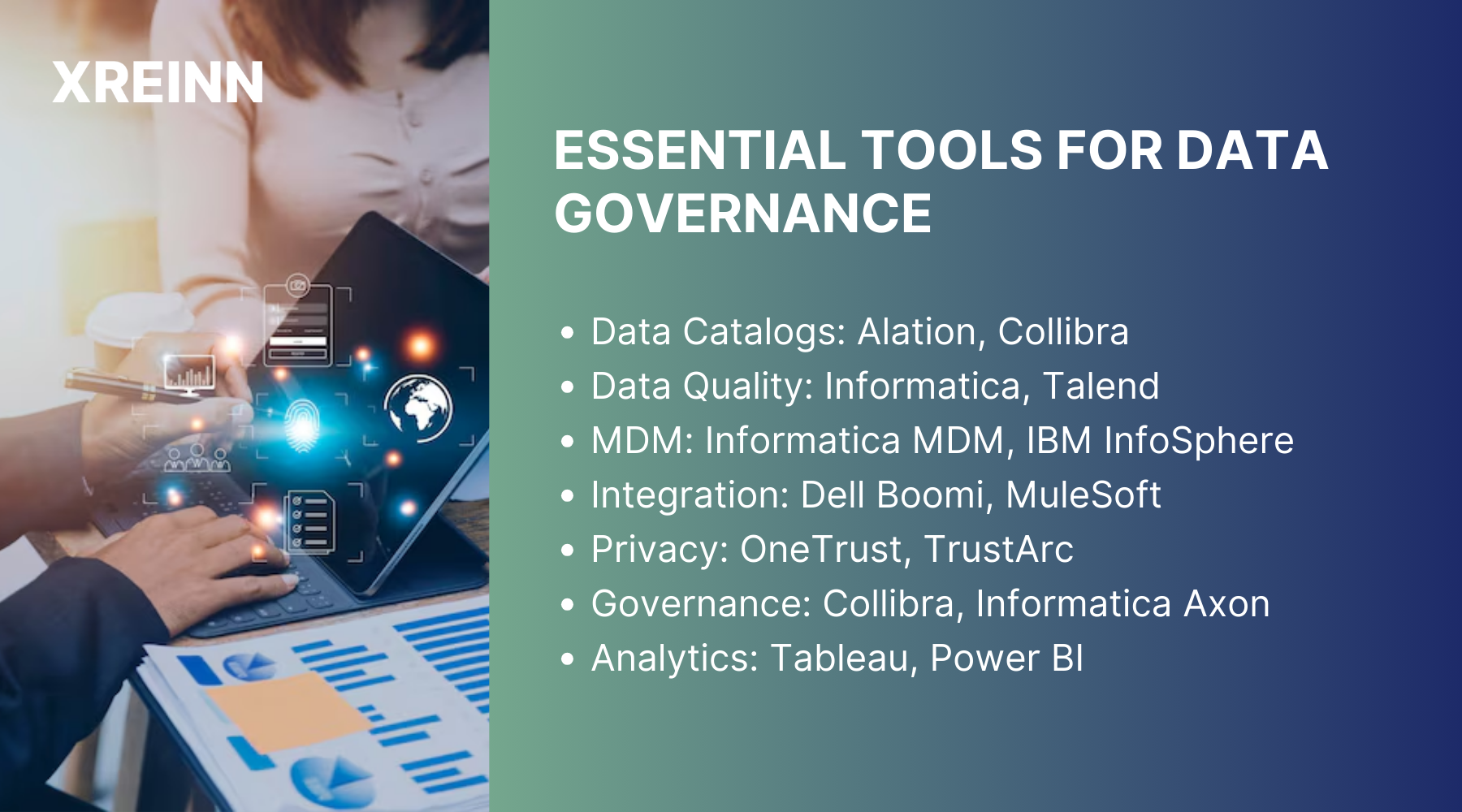Data Integration
Essential Tools and Strategies for Data Governance in Integration Projects
Jul 03, 2024
Getting data governance right in integration projects is not a simple task. With the rise of cloud computing, big data analytics, and increasingly strict regulations, traditional approaches to data governance are no longer sufficient. Ensuring your data stays accurate, compliant, and secure across multiple systems can be a real challenge. But with the right tools, you can make this task manageable and even seamless.
In this guide, we will look into essential tools and strategies to improve your data governance and transform the integration projects that you can implement for more effective and efficient results.
Essential Tools for Data Governance in Integration Projects

1. Data Catalogs
A data catalog is more than a repository; it's the foundation of your data governance strategy. These tools organize and manage metadata, making it easier to understand and use your data assets. Tools like Alation and Collibra are the best in this space.
What to Look?
Look for data catalogs that offer automated metadata harvesting, which saves time and reduces errors by automatically pulling in metadata from various sources. Data lineage tracking is another important feature, providing a visual map of data flow across your systems, and helping you trace errors back to their source. Integration capabilities with other tools ensure seamless workflows and enhanced functionality.
How to Implement?
Start by evaluating your current metadata environment to identify gaps and overlaps. Choose a data catalog that aligns with your needs, focusing on scalability and compatibility with your existing infrastructure.
Integrate the catalog into your data governance framework by setting up automated processes for metadata collection and establishing protocols for data lineage tracking. Regularly update and maintain your catalog to reflect changes in your data environment, ensuring continuous accuracy and relevance.
2. Data Quality Management Tools
Ensuring data quality is important for any integration project. Advanced data quality management tools like Informatica Data Quality and Talend Data Quality go beyond basic cleansing and validation, offering the best features to maintain high standards.
Implementation Strategy
Integrate these tools at the earliest stages of your data lifecycle to establish quality standards from the outset. Configure machine learning algorithms to suit your specific data patterns and use cases, ensuring they accurately detect anomalies.
Set up real-time monitoring dashboards to provide continuous oversight and actionable insights. Regularly review and refine your cleansing routines to adapt to changing data landscapes and emerging quality issues.
3. Master Data Management (MDM) Solutions
Master Data Management solutions are also important for maintaining consistent and reliable master data across your organization. They ensure that key data elements are accurate and uniform, supporting effective data governance. Informatica MDM and IBM InfoSphere MDM are the best solutions in this domain.
Implementation Steps
Begin by defining your master data domains and identifying key data elements within each domain. Select an MDM solution that supports your multi-domain needs and integrates well with your existing systems.
Develop a comprehensive data model that outlines relationships and hierarchies within your master data. Implement advanced matching and merging processes to cleanse and consolidate your data. Continuously monitor and update your MDM system to maintain data integrity and relevance.
4. Data Integration Platforms
Seamless data integration is essential for maintaining governance standards. Advanced data integration platforms like Dell Boomi and MuleSoft provide the capabilities needed to handle complex data environments.
How to Implement?
Evaluate your integration needs and choose a platform that supports the necessary data sources and integration patterns. Configure real-time data integration processes to keep data synchronized across your systems. Use API management features to create and secure APIs for data access and integration. Optimize your integration workflows by continuously monitoring performance and making adjustments to improve efficiency and reliability.
5. Data Privacy and Compliance Tools
In the current regulatory environment, compliance with data privacy laws like GDPR and CCPA is non-negotiable. Advanced data privacy and compliance tools like OneTrust and TrustArc help you tackle these complex requirements.
Integration Tips
Incorporate these tools into your data governance framework to ensure continuous compliance. Set up automated compliance reporting to streamline your regulatory processes and reduce the risk of non-compliance. Use data masking in your development and testing environments to protect sensitive information. Implement encryption for all data transfers and storage to improve security and protect against breaches.
6. Data Governance Platforms
A centralized data governance platform provides a unified approach to managing data governance activities, policies, and processes. Tools like Collibra Data Governance and Informatica Axon are excellent choices.
Implementation Guide
Choose a platform that supports your governance needs and integrates with your existing tools and systems. Define your governance policies and configure the platform to enforce them through automated workflows.
Use collaborative features to involve stakeholders from different departments, ensuring that governance initiatives are aligned with business goals. Continuously monitor and adjust your governance processes to adapt to changing requirements and improve effectiveness.
7. Data Analytics and Monitoring Tools
Continuous monitoring and analytics are also significant for maintaining effective data governance. These tools provide the insights needed to proactively manage and improve your data governance practices. Consider tools like Tableau and Power BI for their advanced capabilities.
Advanced Analytics
Predictive analytics helps identify potential data issues before they become problems, allowing you to take preventive action. Real-time monitoring ensures that you can detect and address issues as they arise, maintaining data integrity and compliance. Integration with AI and machine learning tools improves your ability to analyze and act on data insights, driving better governance outcomes.
Conclusion
Effective data governance in integration projects requires more than basic tools and knowledge. By using these advanced tools and implementing the strategies outlined above, you can ensure that your data governance practices are powerful, compliant, and aligned with your business goals. Assess your current toolkit and consider integrating these essential tools to improve your data governance framework, driving better outcomes and maintaining a competitive edge.

Data Analytics
Jun 27, 2024Master key concepts in data analytics with practical tips to enhance decision-making and achieve success in your projects and professional growth

Data Analytics
Jul 01, 2024Learn the essential stages of the data analytics workflow to turn your data into valuable business insights and drive growth.

